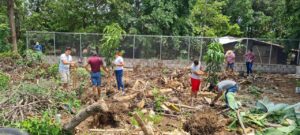Signs for Rue de las Flores appear as soon as you exit the airport, and they pop up every couple of miles after that. They cannot be avoided, and soon you simply want to visit this place out of sheer curiosity. (It is similar to driving on I-95 south to Florida and seeing those pesky signs for South of the Border or I-90 for Wall Drug in South Dakota. You don’t know what it is, but you simply have to pull over to find out because those intriguing signs just beg you to stop.)
I should explain that the Rue de la Flores is a 20-mile-long road in western El Salvador stretching from Sonsonate to Ahuachapan, the department on the Guatemala border. Five small colonial towns comprise the route: Nahuizalco, Salcoatitan, Apaneca, Ataco, and Juayua. Each one has its own personality and charm.
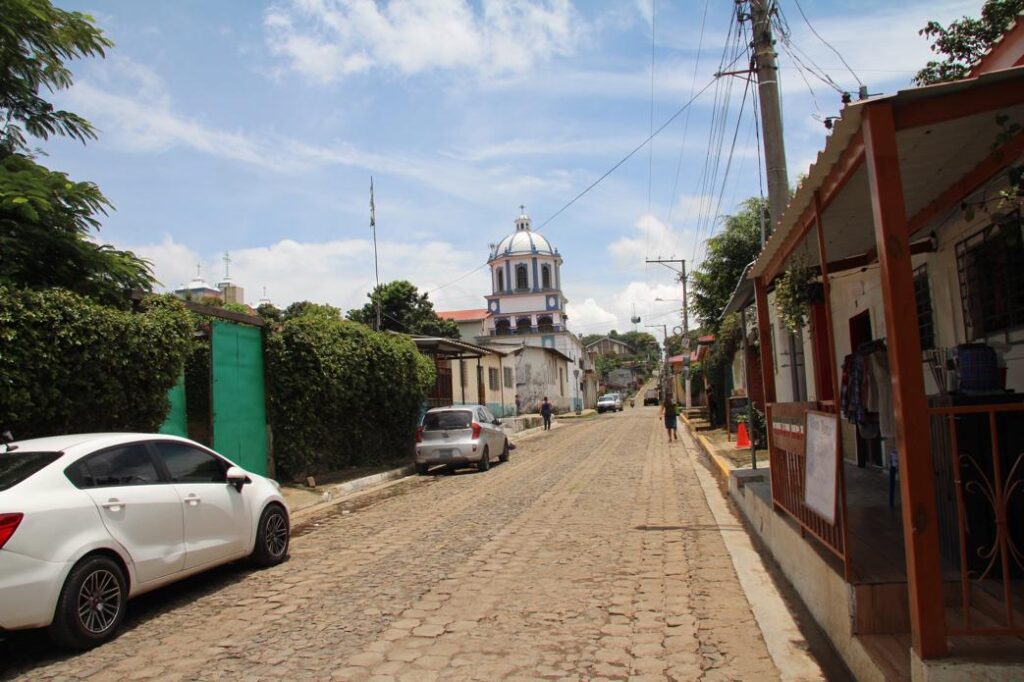
The “Road of the Flowers” — Rue de las Flores — is one of the scenic “must dos” for tourists to El Salvador which is probably why we had not done it. My partner constantly reminds me that our purpose in visiting El Salvador is not tourism, it is ministry; or he reminds me, “We are here for the people.”
Nevertheless, it is nice to take a break from all those serious, heart-wrenching interviews we do every now and then. I caught him in a weak moment many years ago asking if he would consider our one pastor friend driving us to see Rue de las Flores. After all, I knew we would be talking ministries the whole way to and from our destination, so all was not lost. We set a date and reached the first charming little town.

We took a few photos of colorful murals on sides of buildings, saw a few flowers, our friend purchased a large bouquet of flowers, and then the clouds opened up and it began to rain. We pulled over and tried to wait it out. Clouds just hung in the air camouflaging all the many volcanoes in the distance which would have offered great photos on a clear day. Our driver told us there was no point continuing. He feared the mountain roads would become slippery and dangerous if we waited. About thirty minutes later we turned around and returned.
I always wanted to complete the trip. Several years later we tried a second time with another pastor friend. On our climb up the first volcano around a sharp dangerous bend in the road the radiator of his car broke in half. We literally ascended the mountain in neutral without power, periodically using the emergency brake pedal with all us passengers deep in prayer. (His car has not worked since.)
The third time was a charm. We didn’t have much time on this last trip; a half-day which isn’t very long. We hired a driver with a reliable vehicle and told him we simply wanted to see the towns and get some good photographs along the way for our website. We didn’t have time to hike to the seven waterfalls, visit the Los Ausoles geyser, or do the ziplining.
We knew our August timing was not the best for flower viewing. October to February are the best months for that. Nevertheless, it was probably now or never.

My personal favorite town was Ataco with its authentic cobblestone streets. The main streets were full of small artisan shops whose proprietors were welcoming but not pushy.
Each town had lovely central parks with shade trees, markets, benches for relaxing, and people of all ages interacting. Around the parks local vendors often sold flea market items or fresh produce and fruit. It’s always fun identifying those unfamiliar tropical fruits we can’t get in our stores at home like the jocote, anona, and rambutans. Food festivals are common on weekends, and we were there on a Saturday.
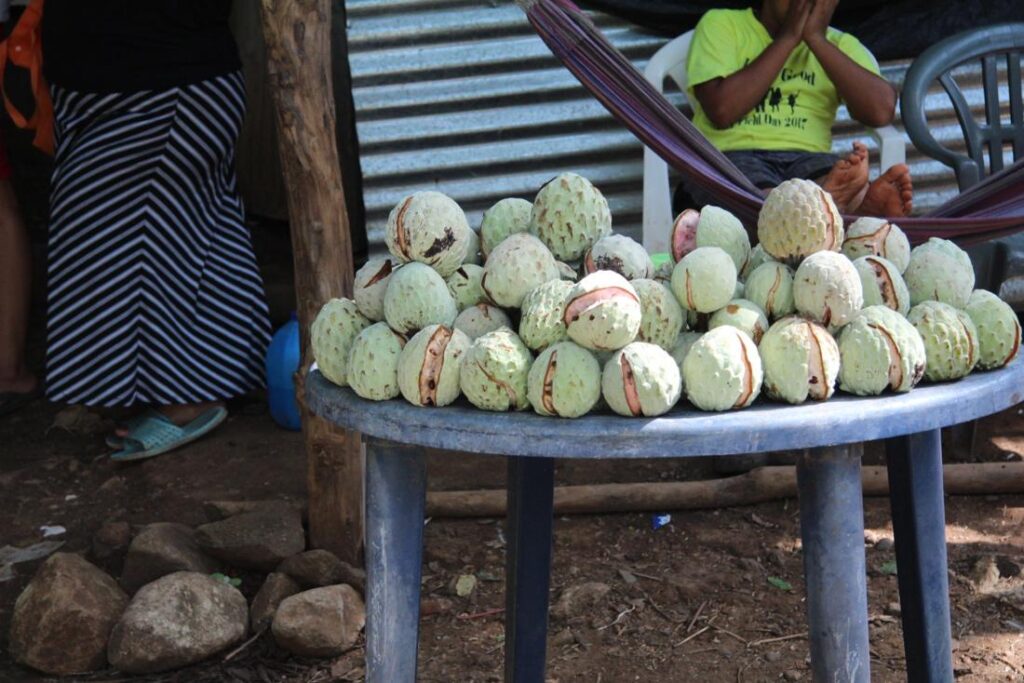
The colorful murals on buildings and shops were all different and engaging. We have lots of great photos of them. Churches all tended to be bright white in the colonial architecture design with different variations; all were open to visit.
Some tiny towns even had two sizeable churches!
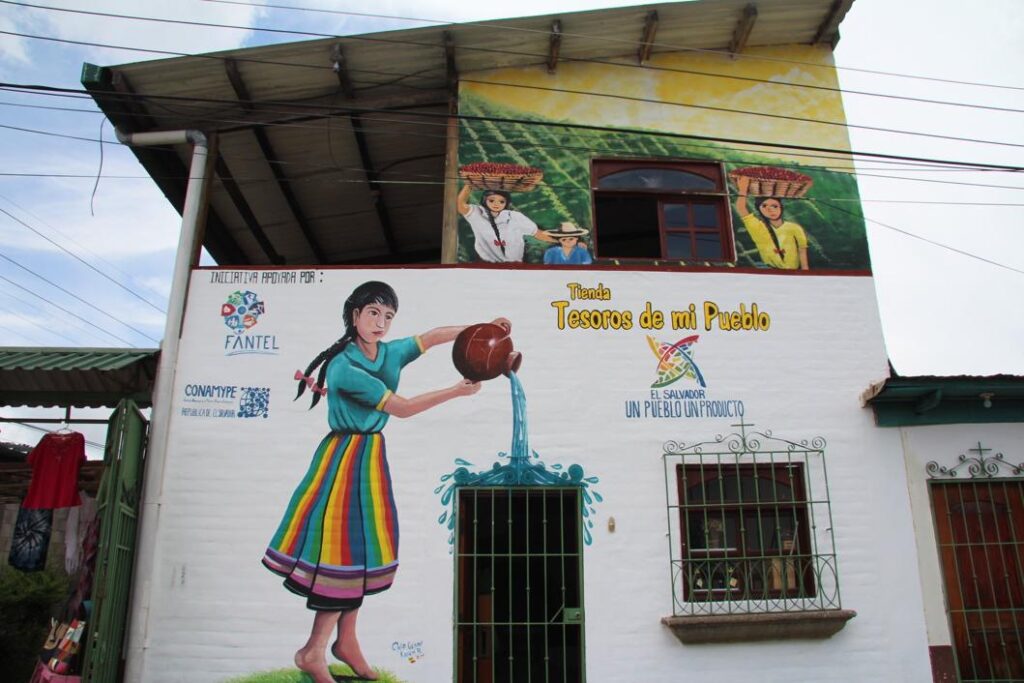
Coffee plantations cling to the hillsides often offer tours, but we have already done that so we moved on. My partner was interested in seeing surfers on a beach, and so we included Playa Tuncho in our tour.

High on top of the volcanoes are people with handmade wooden carts (similar to our old “go carts”) which they load with firewood and ride down the mountain. We were curious how they got them back up. Perhaps on the back of a truck?

We also noted one area where merchants were selling their handmade furniture at every turn of the road. We guessed this was an area of hardwood forests. We had never seen this before.

Speaking of wood, another unusual site was a 400-year-old Ceiba tree. I looked like an ant standing beside it.
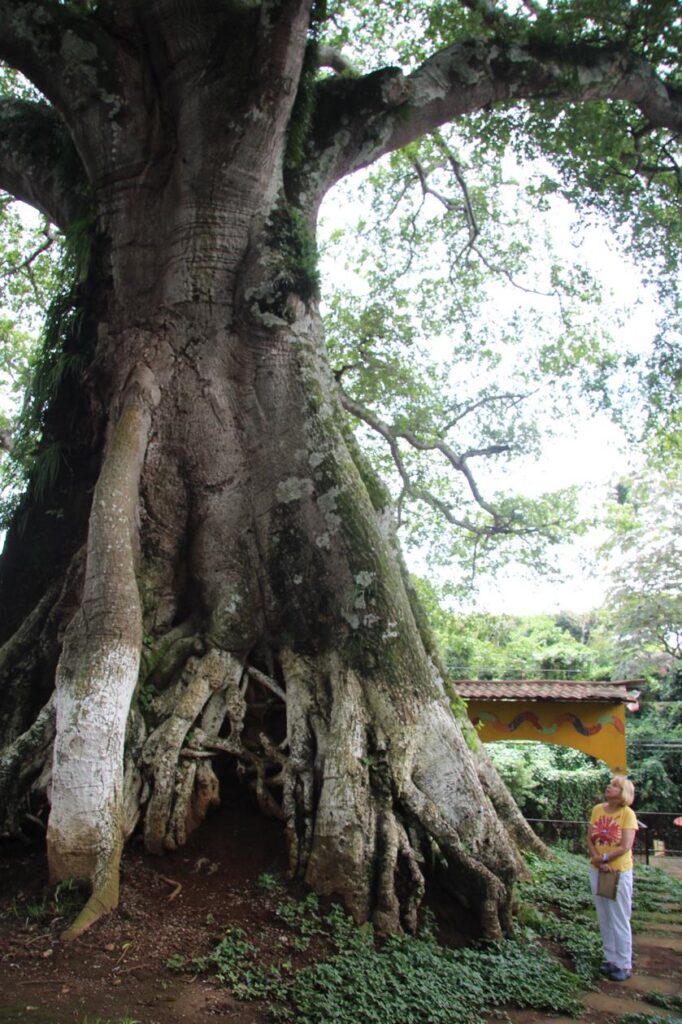
To really capture the whole essence of Rue de las Flores takes several days, and you need to stay a couple of nights in local hostels in the area and commit to eating local foods. One of us is not that brave. While I was off exploring a town park and my partner was off taking photos, I did look longingly at our guide’s lunch at a local outside café. It consisted of a large bowl of chicken soup, a salad, a large serving of rice, a chicken wing, and a can of soda all for $2.50! If only I didn’t get sick every time I came here! Oh well, I pulled out my reliable, boring Lance crackers from my backpack knowing they are safe for me.
The third time was a charm. I did enjoy the day – which happened to be my birthday- immensely traveling through the five towns along the Rue de las Flores. And now back to ministry. After all, we’re not tourists; “We’re here for the people.”



